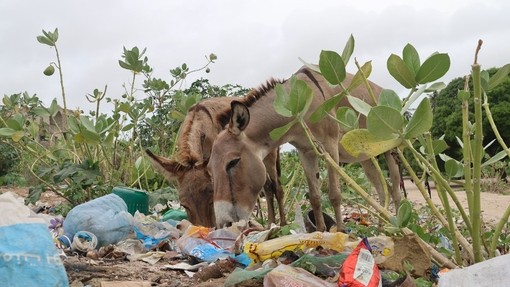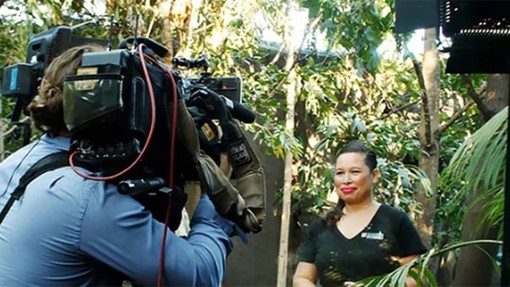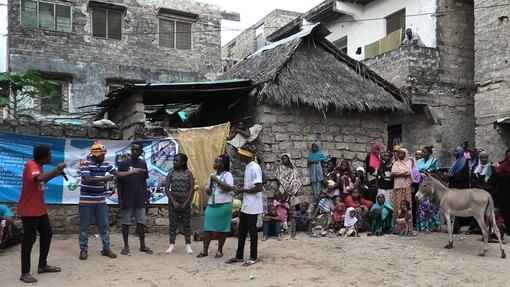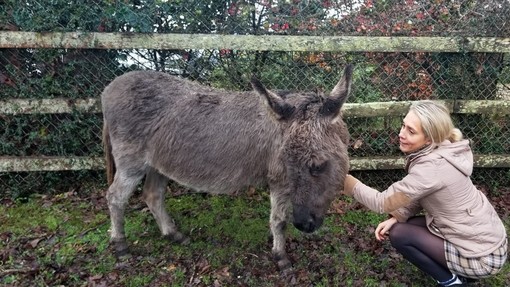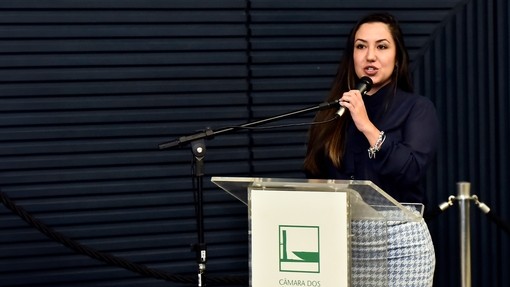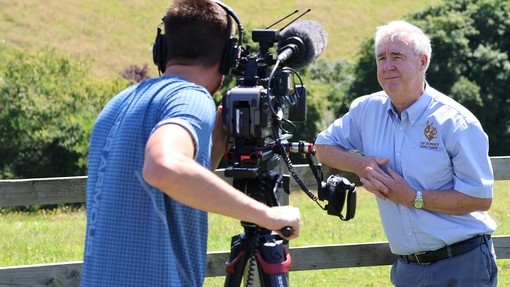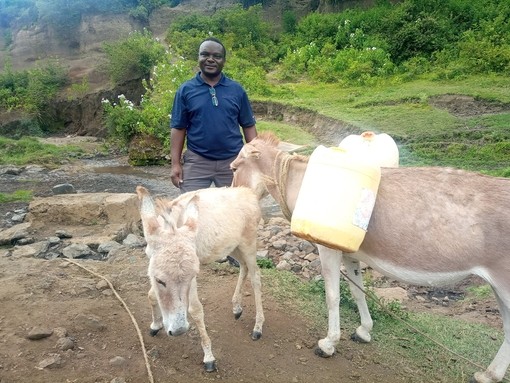
Supporting communities and donkeys in Africa
You may have heard of ‘Send a Cow’, but you might not know how this global development charity evolved far beyond shipping livestock and is creating transformation on a much bigger scale based on social inclusion, sustainable farming and enterprise skills development.
We spoke to the Country Director of Ripple Effect in Kenya, Titus Sagala, to understand more about where donkeys come into this and the power of partnership.
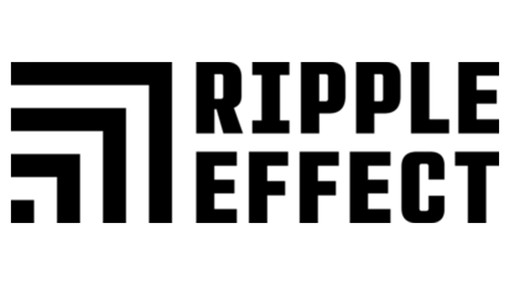
Ripple Effect has a long history, can you tell us about it?
Originally we were called Send A Cow. In 1988, British farmers physically sent cows to families in Uganda, which was going through civil war. At the time UK farmers were being asked to cut back their herds because there was too much milk in Europe. They realised that one animal given to a Ugandan family created transformation on a much bigger scale, because they were able to use the manure to plant better crops, access high quality nutrition through the milk and earn an income through its sale.
Around the time that mad cow disease (Bovine Spongiform Encephalopathy BSE) broke out and cows could no longer be exported outside the UK, it was realised that more was needed to transform the lives of communities in Africa.
So ‘Send a Cow’ evolved into Ripple Effect, speaking to the wider effect of our approach which passes on the gifts of livestock, seeds and knowledge.
It became a livelihood programme which provides appropriate interventions based on community needs and locally based solutions, expanding to six other African countries and only involving cows from within Africa when necessary.
How does Ripple Effect work now?
Ripple Effect has three main components. The first is gender and social inclusion. We work with communities on collaborative activity that includes everyone - men, women, youth, children, the disabled, the sick etc.
The second is sustainable farming. We are not targeting production, but the productivity of the land. We empower farmers to make their land productive and conserve the environment. We recommend the use of regenerative agriculture and circular economy principles instead, utilising their own animals’ manure to create compost that then, in turn, nourishes the soil and helps crops to grow better.
The third strand of the work is enterprise development. When communities become food secure, they can produce surplus for market - as a family or together as a community group. They can use their farms as a productive asset and participate in the local economy.
We have a strategy that will support an additional 700,000 people in Kenya with these programmes by 2030, and have already reached 300,000.
What does this have to do with donkeys?
Donkeys significantly contribute to family incomes in Africa by transporting goods, people and produce from one place to another. However, it’s often in ways that are not good for the donkey - they are beaten, not fed properly, and there are myths and attitudes towards them which are not positive for their welfare.
There is also a correlation between donkey welfare and the poverty of people. People in less desperate need tend to treat their animals better because they work them less. They are not wholly dependent on the donkey, so they can give it rest. They see it as more than something that brings money in, they look on the donkey as a comfort and companion. An investment in improving people’s livelihoods through the Ripple Effect programme, along with increased awareness of welfare, leads to donkeys being treated better.
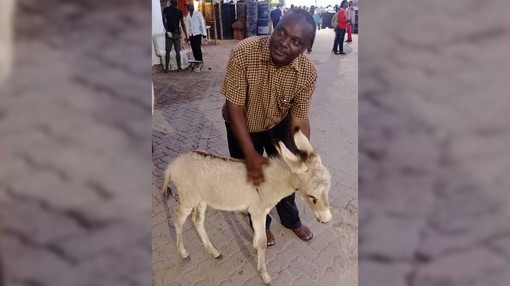
How do you work with The Donkey Sanctuary?
We have aligned goals. The Donkey Sanctuary works to reduce donkey suffering, and we know donkeys are partly suffering because the people who keep them are also suffering. Together we can improve the lives of people and donkeys.
The Donkey Sanctuary has supported community assessments in Migori, West Pokot and in Trans-Nzoia for a piece of work which will impact at least 6,000 donkey-owning families in these regions. We spoke to donkey owners, local administrators and government, service providers, and looked at the economic situation and activities in those areas. Then we assessed the welfare of donkeys and how their health is being taken care of. We looked at their hooves, legs and wounds, and the access to animal health services, which often are not there.
We want to work with local animal health providers to build their capacity in working with donkeys and their skills in donkey handling. We also aim to raise awareness around proper harness and cart use, for the comfort of the animals and to avoid wounds.
As well as the welfare issues, donkeys in Kenya are also impacted by the donkey skin trade which has led to theft and bush slaughter. Chinese slaughterhouses have opened in Kenya and are in need of hides. We are in an alliance that advocates to implement the donkey skin trade ban in Africa and we are working to increase our impact on this with support from The Donkey Sanctuary, as well as supporting communities to become advocates themselves.
We are building a powerful partnership - people together with animals, together with their farms, together with the environment, in what we call the ‘One Health approach’.
Community is clearly important in your work. Why?
We implement through community groups, such as groups of farmers. We work with them to look at what they do and how we can improve it through governance structures, the way they relate to each other and the type of activities they engage in.
When we meet them, they are usually doing ‘Merry Go Round’ work, where they all contribute a little money into a kitty, then they are able to buy something like communal kitchen utensils. Or when they have a funeral, they help each other cook for the mourners. The first part of the programme is to expand their vision to beyond the Merry Go Round. They can then see their power to come together to do even bigger things.
How does it work in practice?
When we go out to new communities we ask them, ‘What do you have?’ rather than ‘What do you need?’ Then we work with them to identify the existing resources that can be utilised in a better way, to get to where they want to be.
When you meet new people, the first thing they may tell you is that ‘We are poor and don’t have money’. So then you ask, ‘Do you have land?’. ‘Yes, I have two acres.’ ‘Do you have a chicken?’ ‘I have two.’ ‘Do you have a donkey? Children? Your own energy?’ ‘Yes’. Then we say, ‘Aha, how can we utilise these resources so that they give you the money you need?’
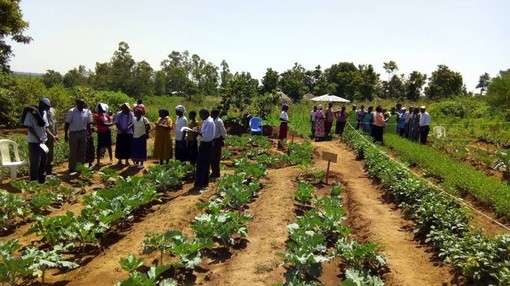
What are your biggest challenges?
Many of the funding opportunities are time bound. You have results that need to be achieved within a very specific time period. For our work, a change of attitude is a big undertaking, and requires resources and time to interact with communities. Projects can end without funding for a follow-on project, which can sometimes limit your impact.
And then there’s the issue of climate change. We are supporting people to improve their agricultural methods, but they are dependent on the climatic conditions. There is too much rain, very little rain or no rain at all. The support given to people can easily be wiped out by the adverse climatic changes and environment.
What are you personally most proud of?
When we visit families that are now thriving. As an example, one lady called Mary was disinherited by her family after she became a widow. She joined one of our groups, received our training and attended demonstrations, and she was very hard working. With a small piece of land, she was able to plant vegetables and Napier grass. Then she took the money from the vegetables to lease a piece of land to plant fodder. They made a grazing unit and we gave them an in-calf heifer as a productive asset, and they religiously followed the training. I followed up with them every time I was nearby.
After the animal calved they produced an amazing amount of milk and could sell the surplus. Eventually Mary opened a shop, then bought a farm and built a house. Her younger children can now go to school. This lady is intelligent, she has an entrepreneurial mind. She’s suppressed because she did not have opportunities. And by just providing that one opportunity in that village, the ripple effect has spread and she’s completely changed her circumstances.
I can say that I’m not the typical CEO who sits at his desk all the time! I connect with the farmers that we work with because I come from a background where my family was very poor. I identify with the struggles that people are having in these communities, having gone through the same. I know how they are feeling.
Find out more about Ripple Effect and their work
Read more about Ripple EffectShare this page
Tags
- Blog

